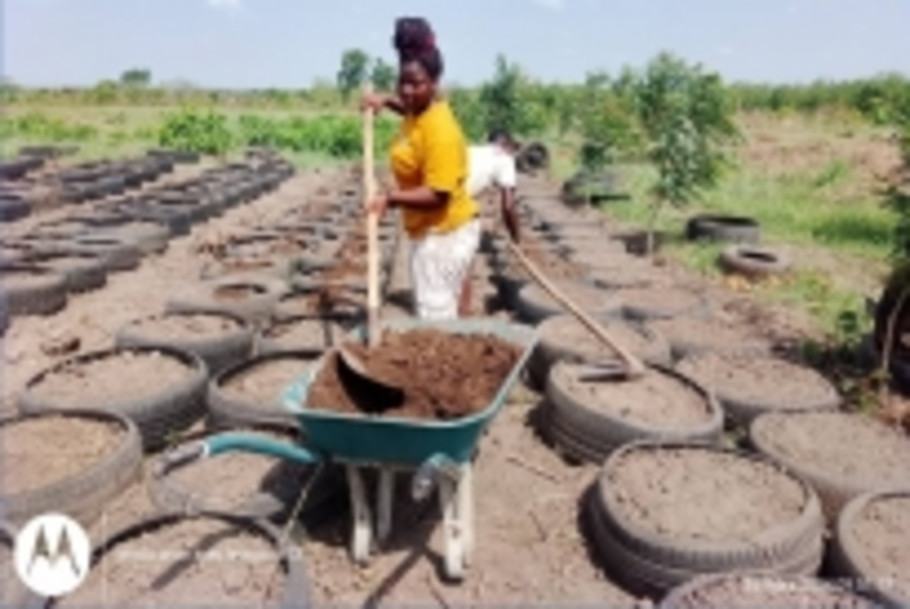
L'adaptation au changement climatique nécessite des approches innovantes. Une jeune agricultrice togolaise a trouvé un moyen créatif d'utiliser les ressources avec parcimonie, protégeant ainsi la planète tout en augmentant le rendement de ses cultures.
16/12/2024
Old car tyres are not usually the first thing that spring to mind when you think of growing tomatoes… But discarded tyres have transformed the fortunes of young Togolese farmer, Afi Olive Amossou, 25, who is interim president of the network of young producers and agricultural professionals of Togo (REJEPPAT) for the plateaux region. And her innovative model of agriculture is spreading.
Breathing life into old tyres
Farming had become challenging for Ms Amossou. Lack of water due to the changing climate, poor and degraded soils due to overexploitation, fungal diseases which come from the soil, as well as difficulty in accessing land as a young person were some of the difficulties she was facing. At the same time, Ms Amossou was seeing car tyres littering the streets of her local town with no system for recycling them.
Taking part in Agricord’s (FFF’s) climate resilience training led her to think carefully about how she could do things differently and how she could make minimal use of resources. The training sparked a new idea for how Ms Amossou could grow her crops. “Old tyres make perfect pots,” she says. “They are efficient in the use of space, water and fertilisers.” Now, on her farm, you see row upon row of neatly repurposed tyres which form her new above-ground market garden.
So how does it work?
Ms Amossou collects disused tyres and brings them to her farm in Agoto, Haho prefecture where she reuses them as plant pots to grow tomatoes, peanuts and chilli peppers. The edge of each tyre is then cut away to maximise the growing space for the plants and the tyres are lined with biodegradable plastic to avoid any toxic substances leaching from the tyre into the plants. The tyres are filled with soil and natural compost and the crops are planted.
An efficient system
Because the plants are contained in their tyres, the amount of water they need is minimal and they are watered by a drip-feed irrigation system. A system of mulching ensures evapotranspiration is reduced, keeping the amount of water used to a strict minimum.
Ms Amossou employs agricecological practices using natural fertilisers to nourish her crops. Again, very little quantities are needed because the plants are contained within their pots.
Partager :